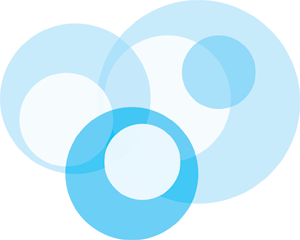





 Order Treatment Online
Order Treatment Online
 Diseases and Conditions
Diseases and Conditions
Pemphigus is an autoimmune disorder that causes blistering and raw sores on skin and mucous membranes. As with other autoimmune disorders, it is caused when the body's defenses mistake its own tissues as foreign, and attack the cells. Pemphigus is derived from the Greek pemphix, meaning bubble or blister.
Pemphigus is a group of rare skin disorders that cause blisters of your skin or mucous membranes, such as in your mouth or on your genitals.
Pemphigus usually occurs in people between the ages of 30 and 60, but it also can affect children and older adults. Men and women develop pemphigus equally, and it affects all races and cultures. However, pemphigus tends to be more common in people of Middle Eastern or Jewish descent.
Usually a chronic condition, pemphigus is best controlled by early diagnosis and treatment, which may include medications or treatments similar to those used for severe burns. Left untreated, pemphigus may be fatal.
Pemphigus is characterized by blisters on your skin and mucous membranes. The blisters rupture easily, leaving open sores, which may ooze and become infected. The signs and symptoms of the three main types of pemphigus differ depending on the type:
The exact cause of pemphigus is unknown, but it may be an autoimmune disorder.
Normally, your immune system attacks foreign invaders, such as harmful viruses and bacteria. But in pemphigus, your immune system produces antibodies that attack healthy cells in your skin or mucous membranes, specifically proteins called desmogleins. Desmogleins bind skin cells to each other. The antibodies cause separation of the cells of the top layer of your skin (epidermis). This reaction is known as acantholysis.
Paraneoplastic pemphigus generally occurs in people who have cancer, most commonly non-Hodgkin's lymphoma and chronic lymphocytic leukemia. In cases in which the cancer hasn't yet been discovered, the appearance of pemphigus blisters may alert doctors to look for a malignancy.
Pemphigus isn't contagious, and there's no way to predict who'll get it. However, your risk increases if:
There are three types of pemphigus which vary in severity: pemphigus vulgaris, pemphigus foliaceus, and paraneoplastic pemphigus.
Diagnosis relies on microscopic examination of skin lesion samples. A biopsy of a suspected lesion is taken: a sample of the blistered skin is removed and examined under the microscope to determine if the cells are separated in the manner characteristic of pemphigus. Unlike in the related pemphigoid, pemphigus manifests as intra-epithelial clefting, meaning the spinous cells of the epithelium break apart, a phenomenon known as acantholysis. This is because the desmosomes are attacked. In pemphigoid, the epitheium remains intact, but is entirely "unzipped" from the underlying connective tissue bed, or lamina propria, because the hemidesmosomes are attacked. Also apparent in pemphigus is a "tombstone appearance" of the basal cell layer and Tzanck cells.
Direct immunoflourescence on the biopsy skin sample can be used to detect desmoglein antibodies in the skin. The presence of these antibodies indicates pemphigus. Indirect immunofluorescence and ELISA can measure desmoglein antibodies in blood serum.
If not treated, pemphigus is fatal, due to overwhelming systemic infection. The most common treatment is the administration of oral steroids, especially prednisone. Recently, there has been great promise of surviving some forms of pemphigus (especially PNP) by using a pooled blood product known as gamma globulin or IVIG. Mild cases sometimes respond to the application of topical steroids. All of these drugs may cause severe side effects, so the patient should be closely monitored by doctors. Once the outbreaks are under control, dosage is often reduced, to lessen side effects.
If paraneoplastic pemphigus is diagnosed with pulmonary disease, a powerful cocktail of immune supressant drugs is sometimes used in an attempt to halt the rapid progression of bronchiolitis obliterans. Some drugs used include solumedrol, cyclosporin, azathioprine, and in rare instances, extremely controlled use of thalidomide in eligible patients. Immune phoresis procedures are also a possible treatment.
If skin lesions do become infected, antibiotics may be used for treatment. In addition, talcum powder is helpful to prevent oozing sores from adhering to bedsheets and clothes.
Treatment, which aims at reducing signs and symptoms and preventing complications, is most effective when it begins as early as possible. The less widespread pemphigus is, the easier it may be to control. Specific treatment methods depend on the severity of the disease.
If your pemphigus isn't too widespread, you may be able to remain at home for treatment. The mainstay of treatment is usually corticosteroids, such as prednisone. However, using corticosteroids over an extended time or in high doses may cause serious side effects, including:
Corticosteroids may be combined with other medications, including:
Widespread pemphigus may require you to stay in the hospital, where you may receive treatment similar to treatment for severe burns. The open sores make you highly vulnerable to infection, which if it spreads to your bloodstream, may be fatal. Besides the medications listed above, you may be given: